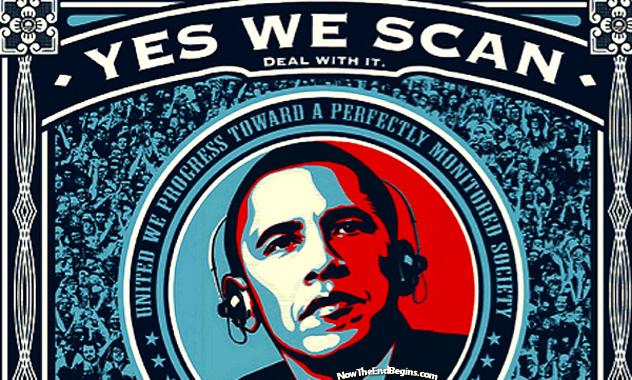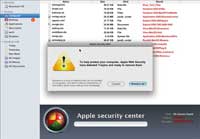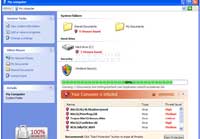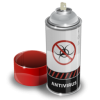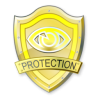SEAL Team 6 Disaster Will Get Congressional Hearing
Comment by Jim Campbell, Citizen Journalist, Oath Keeper and Patriot.

This of course never happened.
For additional refrences please see “Dead men tell no lies the fabrication of Osama bin Laden’s demise.”
There are many more references available, it’s just a matter of digging using your favorite search engine.
According to this article, “SEAL-gate” is potentially a bigger scandal than Benghazi.
Congress has been want to bring in significant testimony by those who perjure themselves, on Benghazi and Operation Fast and Furious.

It was Aug. 6, 2011, when a CH-47D Chinook helicopter carrying Navy SEALs and other U.S. military personnel were shot out of the sky over Afghanistan.
The helicopter, carrying elite special operators to reinforce Army Rangers engaged in a firefight, was attacked from the ground by insurgents wielding rocket-propelled grenades, witnesses later told military investigators.
The Chinook crashed and exploded in a fireball, and all 38 people and a working dog on board perished.
More than two years later, the incident remains shrouded in mystery, and is still the deadliest day for the United States in 12 years of war in Afghanistan. Now, the case of Extortion 17 – the call sign for the downed helicopter – will get its day on Capitol Hill.
 The House Committee on Oversight and Government Reform will
hold a hearing to probe Extortion 17′s demise early next year, U.S. Rep.
Jason Chaffetz (R-Utah) told Foreign Policy.
The House Committee on Oversight and Government Reform will
hold a hearing to probe Extortion 17′s demise early next year, U.S. Rep.
Jason Chaffetz (R-Utah) told Foreign Policy.
The decision raises the possibility that senior U.S. commanders could be put in the hot seat to answer for a mission that critics say was poorly planned at best and doomed from the start at worst, despite it involving one of the United States’ most celebrated military units.
Entire article below.
“I hope to be able to get answers that the families have been unable to secure,” said Chaffetz, chairman of the oversight subcommittee on national security. “I think they have raised some legitimate questions, and the Pentagon has been inadequate in their response.
I hope to be the conduit to come to some sort of resolution. I don’t know that I can ever alleviate all their concerns, but if I can shed and illuminate some light on what was the most horrific tragedy of our time in Afghanistan, I hope to do so.”
Chaffetz said he wasn’t certain yet whether the whole House committee would call the hearing, or whether it would be handled by his subcommittee.
He also wouldn’t say who may be called to serve as witnesses, but it seems clear it will be senior Defense Department officials. The Washington Times and The Hill reported previously that the oversight committee was researching the Extortion 17 case, but Chaffetz’s comments to Foreign Policy mark the first time a member of Congress has confirmed a hearing will occur.
“I want to give the Pentagon an opportunity to respond,” Chaffetz said.
The mission killed 30 U.S. service members, seven Afghan commandos, an Afghan interpreter and a U.S. military working dog in Afghanistan’s Tangi Valley in Wardak province, west of Kabul, U.S. officials said. The group included 17 SEALs, all but two of whom were from the Naval Special Warfare Development Group, popularly known as SEAL Team 6.
A different unit within the SEAL team executed the daring raid in which U.S. forces killed terrorist mastermind and al-Qaeda head Osama bin Laden in his safe house in Abbottabad, Pakistan, early May 2, 2011.
The other Americans on board Extortion 17 included five special operations support personnel and members of the Army National Guard who manned the helicopter.
The families of the fallen service members received more than 1,000 pages of documentation from the military in 2011 outlining the U.S. investigation into the case.
It was led by Maj. Gen. Jeffrey Colt, who is currently the deputy commander of the Army’s XVIII Airborne Corps, based at Fort Bragg, N.C. He was a one-star general when he was appointed by now-retired Gen. James Mattis, then the commander of U.S. Central Command, to conduct the investigation.
Family members told Foreign Policy that Colt later briefed the family members in an emotionally charged meeting at Dam Neck, Va., which SEAL Team 6 calls home.
It was attended by Adm. William McRaven, the commander of U.S. Special Operations Command; Vice Adm. Sean Pybus, then the commander of Naval Special Warfare Command; and other senior military officers, said Charles Strange, whose son, Michael, was a cryptologist with SEAL Team 6 and killed in Extortion 17.
The briefing the families received raised as many concerns as it answered, he said.
Among the questions, the families want to know why the SEALs were all placed in one helicopter when a second one nearby was nearly empty, why the mission proceeded with less drone surveillance than normal, and why the men were on a decades-old Chinook, rather than the high-speed MH-60 Blackhawks they typically used.
All of those details appear as fact in U.S. military documents reviewed by Foreign Policy.
Strange also questions why the military decided to cremate many of the service members on board. While U.S. military officials initially told him his son’s body was burned beyond recognition, he later obtained a photograph from the military that showed his son’s remains were recognizable and not seriously burned, the father said. Those details were not released in a five-page executive summary published by CENTCOM in September 2011.
“There are just too many coincidences,” the elder Strange said. “There are too many questions left unanswered. I want to know what happened so we can make sure this doesn’t happen to someone else’s son or daughter.”
Colt’s investigative team also did not address why the Afghan military was allowed to swap in the seven commandos who participated in the deadly mission at the last-minute.
They were not on the manifest for Extortion 17, but joined the mission anyway, said Doug Hamburger, whose son, Patrick, was an Army staff sergeant and crew chief on board the helicopter when it went down.
The swap has raised questions whether the commandos — or someone else in the Afghan military — may have tipped off the insurgents that the SEALs were coming.
“Nowhere in there is there any mention of the Army talking to the Afghan command to find who they were, why they switched in and what they were doing on that Chinook,” the elder Hamburger said.
The initial operation that night was launched by Army Rangers who boarded Chinooks from a base in nearby Logar province late Aug. 5, 2011, to kill or capture Qari Zahir, who had assumed a senior role with the Taliban in the region, Colt’s team found.
The Rangers assaulted a compound where they believed the insurgent leader was, but they couldn’t find him.
The SEAL team took off as an additional response unit known as an Immediate Reaction Force, and prepared to land after 2:20 a.m. that morning. That’s when disaster struck:
A group of insurgents U.S. forces had not observed through aerial surveillance fired two or three RPGs from a second-story tower about 220 meters away from the helicopter, the investigation found.
The helicopter was traveling less than 150 feet off the ground at the time.
“The first RPG missed the helicopter, but the second RPG struck one of the blades of the aft rotor assembly and exploded, compromising the structural integrity, and causing a rapid chain reaction resulting in the loss of over 10 feet of the rotor blade,” Colt’s executive summary states. “…
The main fuselage dropped vertically into a dry creek bed. The airframe was immediately engulfed in a large fireball, causing multiple secondary explosions of fuel and munitions until the aircraft burned out several hours later.”
Colt’s team surmised that the attack was not the result of a “baited ambush” by the Taliban, but the result of insurgents being prepared after more than three hours of coalition military operations that night.
Documents among the 1,000 pages released to Gold Star families raise the possibility that the enemy fighters may have used heat-seeking man-portable air-defense systems, or MANPADs, but Colt’s findings describe the weapons used as RPGs, which are not as accurate.
Regardless, it took until the following afternoon for Army Rangers to recover the remains of all who were on board Extortion 17. As many as 140 people took part in the recovery of the aircraft, which lasted three days.
The mission was complicated by a flash flood the afternoon of Aug. 6 that washed some of the wreckage 200 yards downstream, the investigation found.
Still, some of the families remain skeptical that they have the full story.
They point out that while the military’s investigation found commanders did not allocate enough aircraft to perform surveillance for the mission, no one was held accountable for that mistake.
The series of bizarre and ugly details that led to the helicopter’s demise make it hard for them to believe that no one in the chains of command — U.S. or Afghan — sold out their dead loved ones.
A Pentagon official declined to comment on what a congressional hearing could mean, and referred other questions to Centcom’s existing report.
A few of the families, including Strange’s and Hamburger’s, sought legal representation from Freedom Watch, an advocacy organization run by Larry Klayman, a lawyer closely affiliated with the Tea Party.
They met with staff members of the House oversight committee this week, and plan to continue pressuring the government for answers.
“It’s a matter of great personal and national importance,” Klayman said. “The way our fallen heroes are treated by the administration affects not only the families, but the desire of new recruits to enter the military.
Currently, many in the military feel betrayed by the government. Hopefully this congressional investigation will get to the truth and clear the air.”
The helicopter, carrying elite special operators to reinforce Army Rangers engaged in a firefight, was attacked from the ground by insurgents wielding rocket-propelled grenades, witnesses later told military investigators.
The Chinook crashed and exploded in a fireball, and all 38 people and a working dog on board perished.
More than two years later, the incident remains shrouded in mystery, and is still the deadliest day for the United States in 12 years of war in Afghanistan. Now, the case of Extortion 17 – the call sign for the downed helicopter – will get its day on Capitol Hill.

The decision raises the possibility that senior U.S. commanders could be put in the hot seat to answer for a mission that critics say was poorly planned at best and doomed from the start at worst, despite it involving one of the United States’ most celebrated military units.
Entire article below.
“I hope to be able to get answers that the families have been unable to secure,” said Chaffetz, chairman of the oversight subcommittee on national security. “I think they have raised some legitimate questions, and the Pentagon has been inadequate in their response.
I hope to be the conduit to come to some sort of resolution. I don’t know that I can ever alleviate all their concerns, but if I can shed and illuminate some light on what was the most horrific tragedy of our time in Afghanistan, I hope to do so.”
Chaffetz said he wasn’t certain yet whether the whole House committee would call the hearing, or whether it would be handled by his subcommittee.
He also wouldn’t say who may be called to serve as witnesses, but it seems clear it will be senior Defense Department officials. The Washington Times and The Hill reported previously that the oversight committee was researching the Extortion 17 case, but Chaffetz’s comments to Foreign Policy mark the first time a member of Congress has confirmed a hearing will occur.
“I want to give the Pentagon an opportunity to respond,” Chaffetz said.
The mission killed 30 U.S. service members, seven Afghan commandos, an Afghan interpreter and a U.S. military working dog in Afghanistan’s Tangi Valley in Wardak province, west of Kabul, U.S. officials said. The group included 17 SEALs, all but two of whom were from the Naval Special Warfare Development Group, popularly known as SEAL Team 6.
A different unit within the SEAL team executed the daring raid in which U.S. forces killed terrorist mastermind and al-Qaeda head Osama bin Laden in his safe house in Abbottabad, Pakistan, early May 2, 2011.
The other Americans on board Extortion 17 included five special operations support personnel and members of the Army National Guard who manned the helicopter.
The families of the fallen service members received more than 1,000 pages of documentation from the military in 2011 outlining the U.S. investigation into the case.
It was led by Maj. Gen. Jeffrey Colt, who is currently the deputy commander of the Army’s XVIII Airborne Corps, based at Fort Bragg, N.C. He was a one-star general when he was appointed by now-retired Gen. James Mattis, then the commander of U.S. Central Command, to conduct the investigation.
Family members told Foreign Policy that Colt later briefed the family members in an emotionally charged meeting at Dam Neck, Va., which SEAL Team 6 calls home.
It was attended by Adm. William McRaven, the commander of U.S. Special Operations Command; Vice Adm. Sean Pybus, then the commander of Naval Special Warfare Command; and other senior military officers, said Charles Strange, whose son, Michael, was a cryptologist with SEAL Team 6 and killed in Extortion 17.
The briefing the families received raised as many concerns as it answered, he said.
Among the questions, the families want to know why the SEALs were all placed in one helicopter when a second one nearby was nearly empty, why the mission proceeded with less drone surveillance than normal, and why the men were on a decades-old Chinook, rather than the high-speed MH-60 Blackhawks they typically used.
All of those details appear as fact in U.S. military documents reviewed by Foreign Policy.
Strange also questions why the military decided to cremate many of the service members on board. While U.S. military officials initially told him his son’s body was burned beyond recognition, he later obtained a photograph from the military that showed his son’s remains were recognizable and not seriously burned, the father said. Those details were not released in a five-page executive summary published by CENTCOM in September 2011.
“There are just too many coincidences,” the elder Strange said. “There are too many questions left unanswered. I want to know what happened so we can make sure this doesn’t happen to someone else’s son or daughter.”
Colt’s investigative team also did not address why the Afghan military was allowed to swap in the seven commandos who participated in the deadly mission at the last-minute.
They were not on the manifest for Extortion 17, but joined the mission anyway, said Doug Hamburger, whose son, Patrick, was an Army staff sergeant and crew chief on board the helicopter when it went down.
The swap has raised questions whether the commandos — or someone else in the Afghan military — may have tipped off the insurgents that the SEALs were coming.
“Nowhere in there is there any mention of the Army talking to the Afghan command to find who they were, why they switched in and what they were doing on that Chinook,” the elder Hamburger said.
The initial operation that night was launched by Army Rangers who boarded Chinooks from a base in nearby Logar province late Aug. 5, 2011, to kill or capture Qari Zahir, who had assumed a senior role with the Taliban in the region, Colt’s team found.
The Rangers assaulted a compound where they believed the insurgent leader was, but they couldn’t find him.
The SEAL team took off as an additional response unit known as an Immediate Reaction Force, and prepared to land after 2:20 a.m. that morning. That’s when disaster struck:
A group of insurgents U.S. forces had not observed through aerial surveillance fired two or three RPGs from a second-story tower about 220 meters away from the helicopter, the investigation found.
The helicopter was traveling less than 150 feet off the ground at the time.
“The first RPG missed the helicopter, but the second RPG struck one of the blades of the aft rotor assembly and exploded, compromising the structural integrity, and causing a rapid chain reaction resulting in the loss of over 10 feet of the rotor blade,” Colt’s executive summary states. “…
The main fuselage dropped vertically into a dry creek bed. The airframe was immediately engulfed in a large fireball, causing multiple secondary explosions of fuel and munitions until the aircraft burned out several hours later.”
Colt’s team surmised that the attack was not the result of a “baited ambush” by the Taliban, but the result of insurgents being prepared after more than three hours of coalition military operations that night.
Documents among the 1,000 pages released to Gold Star families raise the possibility that the enemy fighters may have used heat-seeking man-portable air-defense systems, or MANPADs, but Colt’s findings describe the weapons used as RPGs, which are not as accurate.
Regardless, it took until the following afternoon for Army Rangers to recover the remains of all who were on board Extortion 17. As many as 140 people took part in the recovery of the aircraft, which lasted three days.
The mission was complicated by a flash flood the afternoon of Aug. 6 that washed some of the wreckage 200 yards downstream, the investigation found.
Still, some of the families remain skeptical that they have the full story.
They point out that while the military’s investigation found commanders did not allocate enough aircraft to perform surveillance for the mission, no one was held accountable for that mistake.
The series of bizarre and ugly details that led to the helicopter’s demise make it hard for them to believe that no one in the chains of command — U.S. or Afghan — sold out their dead loved ones.
A Pentagon official declined to comment on what a congressional hearing could mean, and referred other questions to Centcom’s existing report.
A few of the families, including Strange’s and Hamburger’s, sought legal representation from Freedom Watch, an advocacy organization run by Larry Klayman, a lawyer closely affiliated with the Tea Party.
They met with staff members of the House oversight committee this week, and plan to continue pressuring the government for answers.
“It’s a matter of great personal and national importance,” Klayman said. “The way our fallen heroes are treated by the administration affects not only the families, but the desire of new recruits to enter the military.
Currently, many in the military feel betrayed by the government. Hopefully this congressional investigation will get to the truth and clear the air.”








